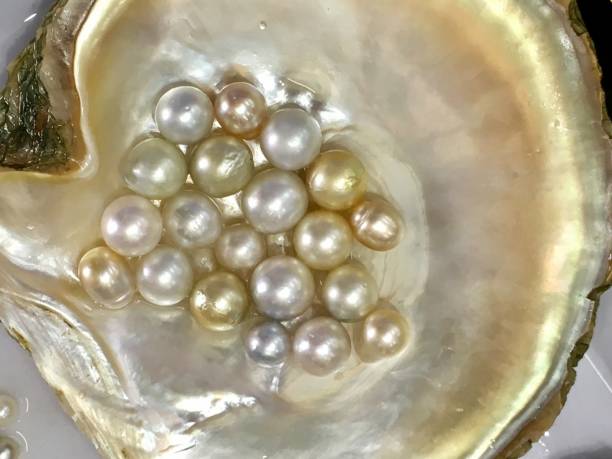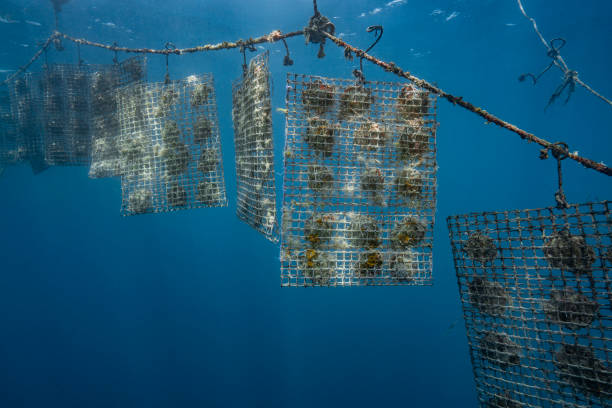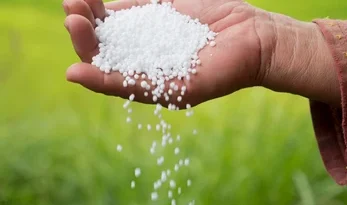Freshwater Pearls Farming मीठे पानी के मोती की खेती

The market for cultured pearls is rapidly expanding. As a result, pearl farming in India is becoming increasingly popular. The best thing about pearl farming is that it requires little investment and yields high returns.
Pearls are in high demand in both domestic and international markets. You can easily combine pearl farming with fish farming and other commercial aquaculture activities after that.
In terms of profit from pearl farming, you can expect to earn 50-60% of what you invest. Furthermore, with the proper pearl farming training and equipment, you can expect to earn up to 100% profit — but this is a long road.
So, if you want to start your own pearl farming business, whether as a hobby or for a serious profit, this is your ultimate guide. A comprehensive guide to:
What exactly is pearl farming in India?
The Advantages of Pearl Farming
How do you start a pearl farming business?
Subsidies for pearl farming, licences, and more
Where in India can I get the best pearl farming training?
Profits and costs of pearl farming
So, let’s get started…
What exactly is pearl farming?
Pearl farming is the cultivation of freshwater cultured pearls on a farm. Farmers nucleate and care for oysters for nearly 2-5 years in order to develop a pearl.
What Are the Advantages of Pearl Farming in India?
99% of all pearls available are cultured. They are derived from mussels and oyster farming. Furthermore, Odisha is India’s leader in pearl farming.
Look into used tractors in Odisha for best-in-class output.
Here are a few benefits:
Here are some of the benefits of pearl farming in India:
1. Is highly valued in the market
The best part about pearl farming is that these natural gemstones are in high demand. Unlike gold and silver, their prices do not change frequently.
Cultured freshwater pearls cost around INR 250/gramme.
In India, cultured saltwater pearls cost around Rs 450 per carat.
2. Simple upkeep and storage
Once cultured, these light-weighted pearls can be kept indefinitely. They are extremely non-perishable. And it can be used at any time to make ornaments or adorn clothing.
3. Lower labour costs, increased employability
Because the process is structured and requires limited manpower, pearl farming is less labour-intensive. As result, This, in turn, significantly reduces labour costs. And if you get the best skills and knowledge from a pearl farming training institute, your chances of getting hired are very good. And, because this type of commercial farming provides a high return, the allocation of income is also quite high.
4. Minimum Expenses and Inputs Required
Pearl farming has low startup and investment costs. The resources, inputs, or methods are readily available at low cost. You can learn to plan resources and optimise costs with the right pearl farming business training in India. With careful planning, you can get the most out of your investment.
Check out these upcoming tractors in India, complete with on-road pricing, features, and more!
India’s Best Pearl Farming Training
CIFA CIFA (Central Institute of Freshwater Aquaculture) under the Indian council of agriculture research provides national training on “Freshwater Pearl Culture”. The training assists small marginal farmers in developing the entrepreneurial skills needed to establish freshwater pearl farming businesses in India.
Other recognised pearl farming training institutes offer comprehensive technical training on how to breed pearls. The following is a list of popular training institutes in India. You can inquire about the costs of pearl farming training as well as the concepts taught.
Training Facility Location Training Duration
Marathwada Pearl Culture (MOTI) and Aurangabad Training Centre
Short-term
WWW.indainpearlculture.com
Mr Ashok Manwani & my wife Kulanjan Dubey Manwani from INDIAN PEARL CULTURE both engaged in adopting innovative simple farming techniques & doing innovative work in cities of different states in India for the last 25 years in the field of Pearl culture.
Jaipur Freshwater Pearl Farming Training Institute
Wizard Pearl Farming Centre Haryana 6 weeks
2 days (theoretical + practical application)
Uttar Pradesh Swastik Pearl Farming and Training Centre 10-15
pearl farming training days (Krishi Vigyan Kendra) N/A Chandangaon, Madhya Pradesh
Alwar, Rajasthan N/A Pearl Farming Training & Research
Now that you’ve learned about the best pearl farming institute in India, let’s look into how to start a pearl farming business in India.
How to Begin Pearl Farming in India – Step-by-Step Instructions
Here are a few steps to getting started with pearl farming in India. Let’s go over these steps to help you develop a pearl farming business plan in India.
Pro Tip: Read our article on frequently asked farming questions.
Step 1: Choosing a Location and Establishing a Pearl Farm
You must choose a location and have its water tested by government-approved laboratories. CIFA-accredited laboratories are ideal because they are genuine and trustworthy. Their examination will be beneficial to you. Determine whether the water quality is suitable for pearl farming.
Step 2 – Acquire Pearl Oyster Stock
Following site selection, the oyster stock must be obtained using the following methods:
Collection of Spats
Spat are young swimming oyster larvae that can be collected using this method. These larvae are ready for grafting and can easily attach to any surface.
Production of Hatcheries
You can also refer to hatchery-produced spat if they are available and reasonably priced in your area.
Gather Adult Oysters
You can collect adult oysters that are reasonably priced. They do, however, have a higher risk of death.
Step 3: Drill and hang the oysters
Oyster Drilling and Hanging
Once you’ve stocked up on oysters, keep them in the fridge.
decide whether the water quality is good for pearl farming or not.
Step 2 – Obtaining Pearl Oyster Stock
After site selection, it’s important to obtain the oyster stock through the following methods:
Spat Collection
In this method, you can collect the young swimming oyster larvae called spat. These larvae are in a perfect state for grafting and can be easily attached to any surface.
Hatchery Production
You can also refer to hatchery-produced spat if they are available in your area and are reasonably priced.
Collect Adult Oysters
You can collect adult oysters that are available at reasonable prices. However, they have more mortality risk.
Step 3 – Drill & Hang Oysters
Drill and Hang Oysters Once you’ve stocked up on oysters, keep them in the designated water area. Chaplets, which are similar to circlets or garlands, can be used to hang them. They can be stored in large net containers.
Grafting is the fourth step.
To grow pearls, you can use the artificial grafting method. You can implant an artificial nucleus into the tissue of a pearl oyster, which will grow into a pearl.
Step 5: The Pearl Development Procedure
The oyster becomes irritated after the nucleus is implanted. As a result, the oyster develops a calcium carbonate layer on its surface. Pearls develop over a period of 12-24 months. During this transition, provide proper care, feed them on time, and keep them free of infection.
Step 6 – Pearl Marketing Step 6 – Pearl Marketing
When you’ve finished making pearls, make sure you market them to the right people. You can recommend them to jewellery, cosmetics, and clothing companies. Prepare a marketing strategy. Furthermore, if you have a high-quality stock of pearls, you won’t have to compete for them in the market. Their excellence will speak for itself.
Profits and Costs of Pearl Farming
A single oyster costs between Rs 20 and Rs 30 at the low end. A single oyster pearl ranging in size from 1 to 20 mm can cost between Rs 300 and Rs 1500. Pearls are in high demand in jewellery, cosmetics, paint formulations, and clothing adornment.
The initial investment for pearl farming would be between 20,000 and 25,000 dollars. With this much money, you can
you have the potential to make up to Rs 300,000. The initial investment would yield a return of between 50% and 60%.
Be aware that while starting a pearl farm is simple, it takes a lot of time. To see a consistent income, you must have the patience to wait up to 5 years.
Cost Elements Associated With Pearl Farming
The price of obtaining oysters using three common methods: collecting spat, buying spat from a hatchery, and collecting adult oysters.
Boat purchase price.
types of supplies and equipment.
Labor expenses.
Scuba diving equipment cost.
cost of establishing a farm structure (lines, rafts, floats, etc.).
The technical advisor’s fee
Advertising Costs
Cost of a grafting technician
License fees
License fees (if you want to scale this commercially)
Let’s Estimate the Costs of Pearl Farming as a Starting Point
Requirements
Area of the Pearl Farming Project
12 to 34 acres Cultured Technique for Double Implantations in Pearl Farming
Stocking density for 9,000–10,000 mussels
Chronology of culture
15 to 18 months.
Assumptions for Pearl Farming Cost and Revenue
India’s Pearl Farming Subsidy

The Central Government will give Indian fisheries subsidies as part of the blue revolution fisheries programme. 50% of the total cost of building a pond for pearl cultivation will be covered by the subsidy.
This subsidy is intended to assist farmers in increasing their income. The farmers can earn an income of up to Rs. 3,000,000 by investing Rs. 25,000.
Process for Applying for Pearl Farming Subsidy, Required Documents
The candidate must be an Indian national who works as a farmer. He or she must have received training in pearl farming in India.
The following are the necessary documents for applying for a subsidy:
Aadhaar Card, Domicile Certificate, Category Certificate, and Bank Account Information
Pond location and farming specifics
passport-sized pictures
How Can I Farm Pearls At Home?
How Can I Farm Pearls At Home?
Pearl farming is simple to do at home in a bucket or fish tank. Recirculating Aquaculture System is the name of the procedure. To begin pearl farming at home, follow these simple instructions.
Place two fish tanks in a row over one another. To allow water to flow to the tank below, drill a hole in the tank above.
Include an air pump to control water temperature and flow. Once installed, the pump system needs to be run for seven days straight for a few hours in the morning and a few hours in the evening.
Make sure the single tank has the following measurements: 3 feet long, 2.5 feet wide, and 1.5 feet deep. This size can comfortably hold 50 mussels at once.
Give mussels the vitamins and minerals they need. Make certain that the algae you are giving to the mussels is of high quality. Since their quality will have an effect on the quality of pearls that are eventually grown.
You can set up a successful business model with the right licencing and training in pearl farming.
But keep in mind that pearls take 12 to 24 months to develop. You will therefore need to practise patience when you first start trading it. Additionally, be sure to estimate your costs as previously described to prevent any unexpected costs. With time, effort, and resources, you can expect to receive between 50% and 60% of the return on a single project. Anyone with the desire to launch a business can consider pearl farming as a profitable business model.
If you plan to engage in commercial farming or agriculture, you should research the best brands’ best-selling tractors and farm equipment.
Frequently Asked Questions
1. Is India’s pearl farming industry profitable?
Ans. Ans. Pearl farming can generate income of up to Rs 10–12 lakhs, with a potential profit of Rs 8 lakhs. All depending on the size & expertise of the business
What is the term for pearl farming?
The process of growing freshwater cultured pearls on a farm is known as pearl farming.
What time of year is ideal for growing pearls?
The autumn months of October through December are ideal for gathering oysters and mussels from local ponds and water bodies.
Is there government-sponsored training for pearl farming?
Ans. The Central Institute of Freshwater Aquaculture (CIFA) of the Indian Council of Agricultural Research (ICAR) offers technical training to students, youths, and farmers in rural areas.
Where can I find pearls in India?
The Gulf of Mannar and the Gulf of Kutch off the coasts of Gujarat and Tamil Nadu, respectively, are where pearls can be found.
How do I launch a pearl farming company?
Ans. Choose a location, decide how much money to invest, decide on the equipment needed to culture pearls, obtain a CIFA-approved certificate and licence, and get the necessary training before starting a pearl farming business.



I have to say, your article was impressive. The way you broke down the topic was concise, and the advice you provided were very valuable. Your prose is captivating, and the article kept my attention throughout. Thank you for writing such an enlightening article.